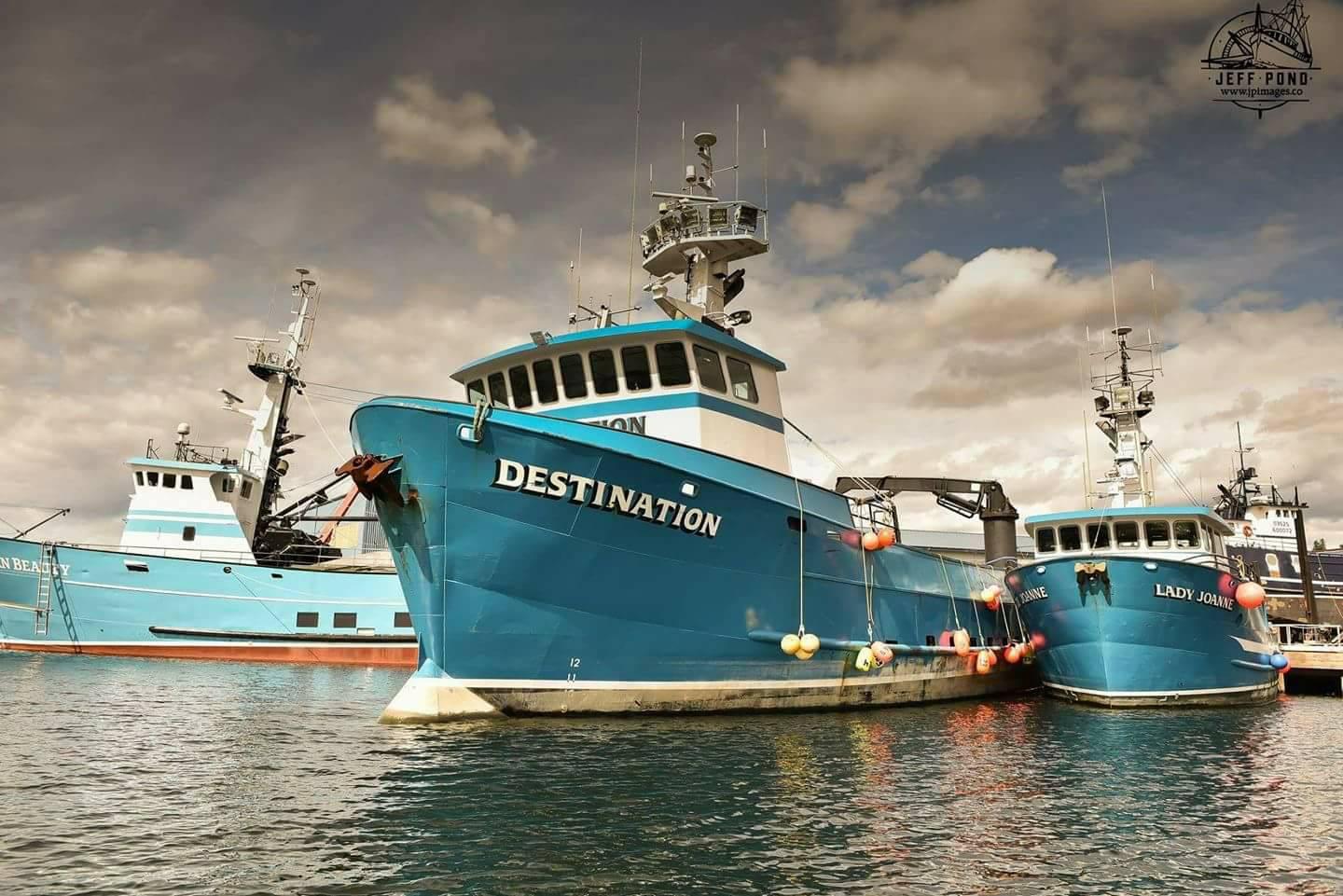
The U.S. Coast Guard is considering civil penalties against the owners of the F/V Destination — the crab boat that capsized two years ago in the Bering Sea, killing all six crew members.
The potential for penalties is just one takeaway from a new report released Sunday, in which investigators identified a number of mistakes that contributed to the deadly accident.
Following a two-year inquiry, Captain Lee Boone unveiled the report at a press conference in Seattle, listing four primary factors that left the Destination in a “vulnerable condition.”
“A failure of the owner to ensure accurate stability instructions were available. Improper loading. The decision by the captain to get underway in heavy freezing spray conditions. And crew fatigue,” said Boone, the Coast Guard’s chief of investigations.
To his first point, Boone said the Coast Guard is considering civil penalties against the vessel’s owners in Washington state, because they failed to provide Captain Jeff Hathaway with federally mandated information about how much gear the Destination could carry safely.
The boat’s principal owner is former Sand Point resident David Wilson. Its stability book hadn’t been updated in more than two decades.
“Since 1993, some changes had been made to the vessel,” Boone said. “Those should have been incorporated into updated stability instructions that the master could follow.”
Without that information, he said Hathaway overloaded the Destination with crab pots — the second problem.
The third was Hathaway’s decision to head out after the National Weather Service notified mariners about bad icing conditions.
“The vessel got underway despite those warnings and subjected itself to icing on the vessel,” Boone said. “So icing on the deck and on the crab pots themselves likely contributed to a stability problem that, in turn, caused it to capsize and sink.”
Why didn’t the crew beat that ice off the vessel to help keep it stable? Boone said the answer — and issue number four — was exhaustion.
“We learned the crew was very fatigued when they left Dutch Harbor the night before the incident,” Boone said. “So the report concludes the crew members were likely sleeping — and perhaps were not on the deck removing the ice, [which] would have prevented the poor stability conditions from occurring.”
Combined, Boone said those factors left the crew with a “limited ability to survive the harsh elements of the Bering Sea.”
In the aftermath of their deaths, he said the Coast Guard is following investigators’ recommendation to increase outreach efforts that encourage stability training for fishermen and boat owners.
But Boone said the agency has declined to pursue new safety regulations that would specify crab pot weight, require owners to maintain records of vessel changes, or create policies to address crew exhaustion.
“It was the commandant’s position that the existing set of regulations was sufficient to have prevented this casualty,” Boone said. “The missing piece here was compliance with those existing regulations.”
Data show the crab fleet has made major safety strides since the 1990s, when 75 fishermen died while crabbing in the Bering Sea The loss of the Destination crew marked the fishery’s deadliest accident in more than a decade.
Laura Kraegel covers Unalaska and the Aleutian Islands for KUCB . Originally from Chicago, she first came to Alaska to work at KNOM, reporting on Nome and the Bering Strait Region. (laura@kucb.org / 907.581.6700)




